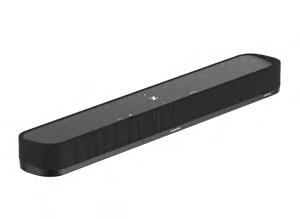The Sennheiser
AMBEO Soundbar Plus is part of the
Soundbars test program at
Consumer Reports. In our lab tests, Soundbar
models like the AMBEO Soundbar Plus are rated on multiple criteria, such as those
listed below.
Sound quality:
A high score indicates the soundbar delivers accurate and detailed sound across bass, midrange and treble after adjusting settings for balanced audio. For top scoring models expect clearer, high-fidelity sound with minimal distortion or other audio issues.
Versatility:
A high score means the soundbar has a wide range of useful features. Top-scoring Full-Featured models include more extras, while top-scoring Basic models have fewer features, they still meet essential needs.
Audio immersion:
Models that score well create an immersive sound field that extends to the sides and overhead.






















